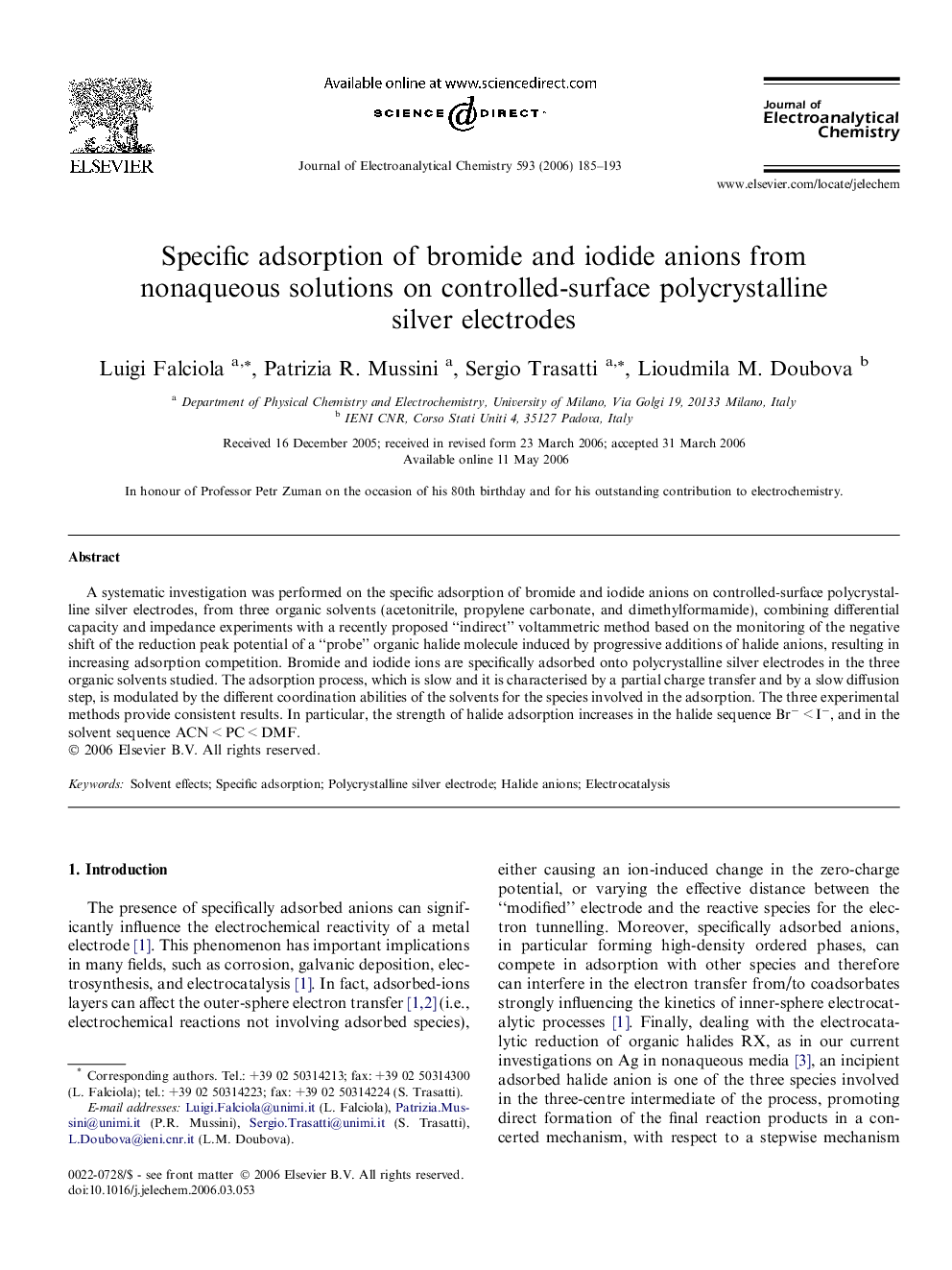| Article ID | Journal | Published Year | Pages | File Type |
|---|---|---|---|---|
| 221169 | Journal of Electroanalytical Chemistry | 2006 | 9 Pages |
A systematic investigation was performed on the specific adsorption of bromide and iodide anions on controlled-surface polycrystalline silver electrodes, from three organic solvents (acetonitrile, propylene carbonate, and dimethylformamide), combining differential capacity and impedance experiments with a recently proposed “indirect” voltammetric method based on the monitoring of the negative shift of the reduction peak potential of a “probe” organic halide molecule induced by progressive additions of halide anions, resulting in increasing adsorption competition. Bromide and iodide ions are specifically adsorbed onto polycrystalline silver electrodes in the three organic solvents studied. The adsorption process, which is slow and it is characterised by a partial charge transfer and by a slow diffusion step, is modulated by the different coordination abilities of the solvents for the species involved in the adsorption. The three experimental methods provide consistent results. In particular, the strength of halide adsorption increases in the halide sequence Br− < I−, and in the solvent sequence ACN < PC < DMF.
